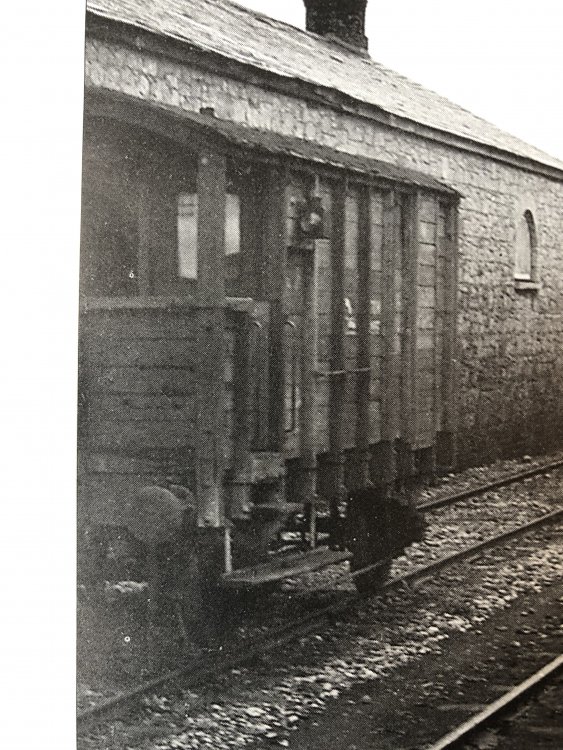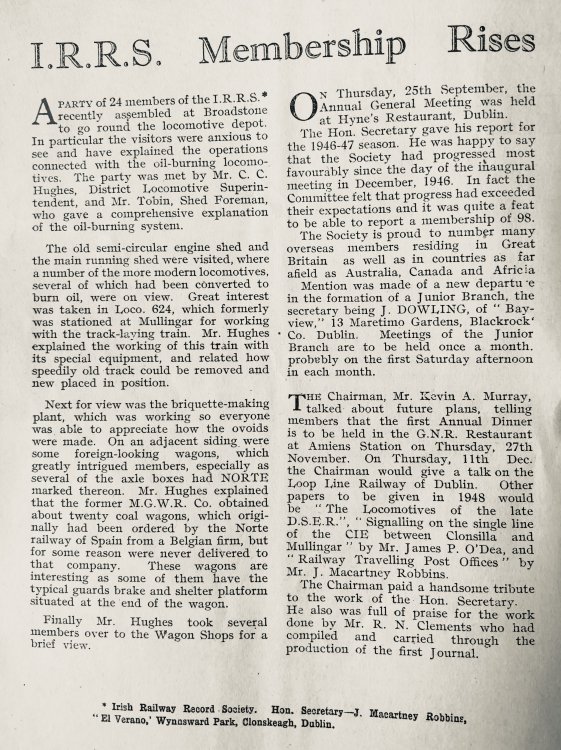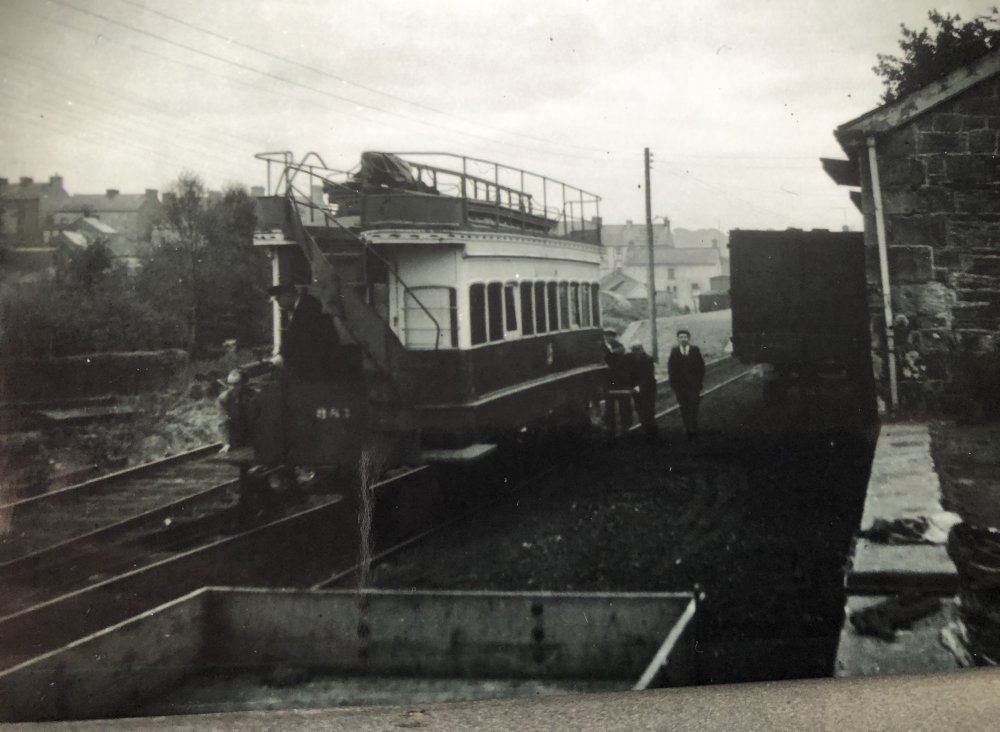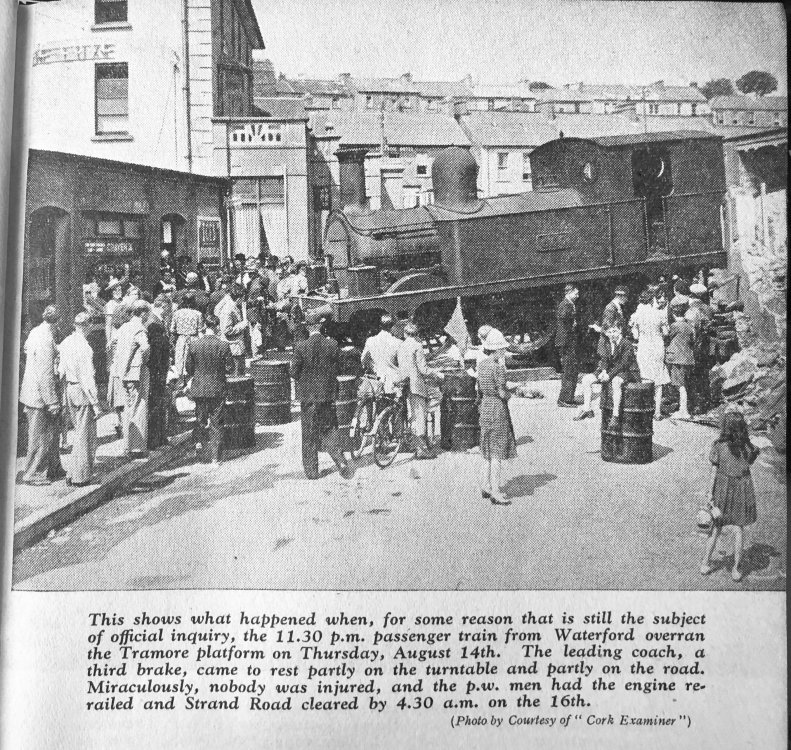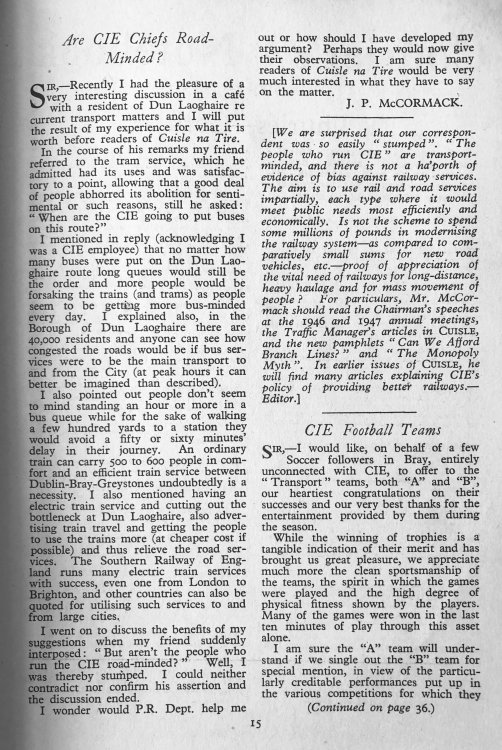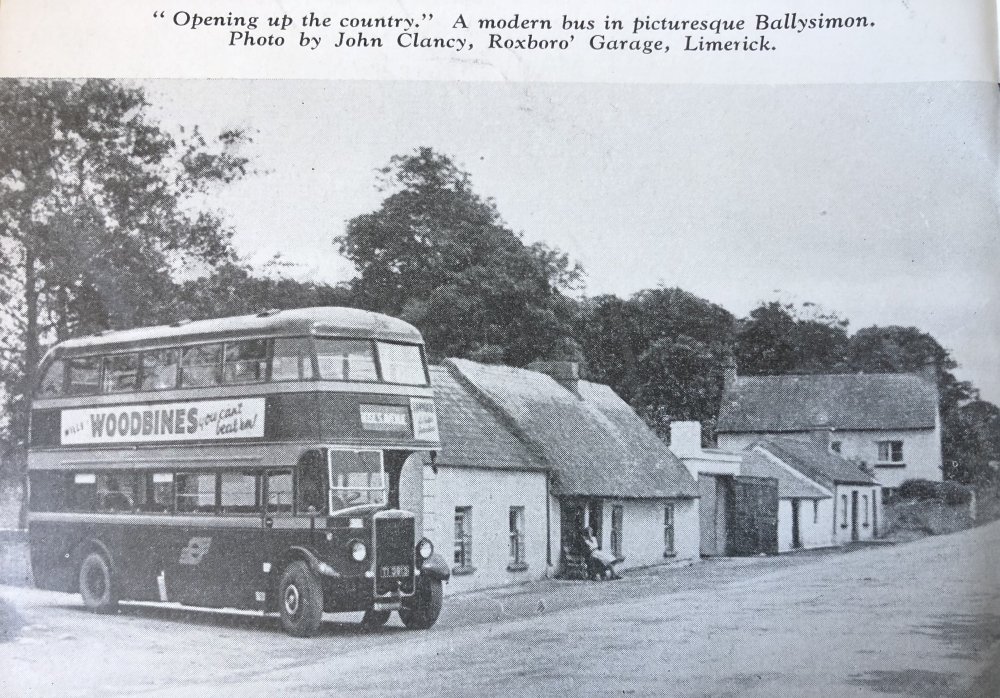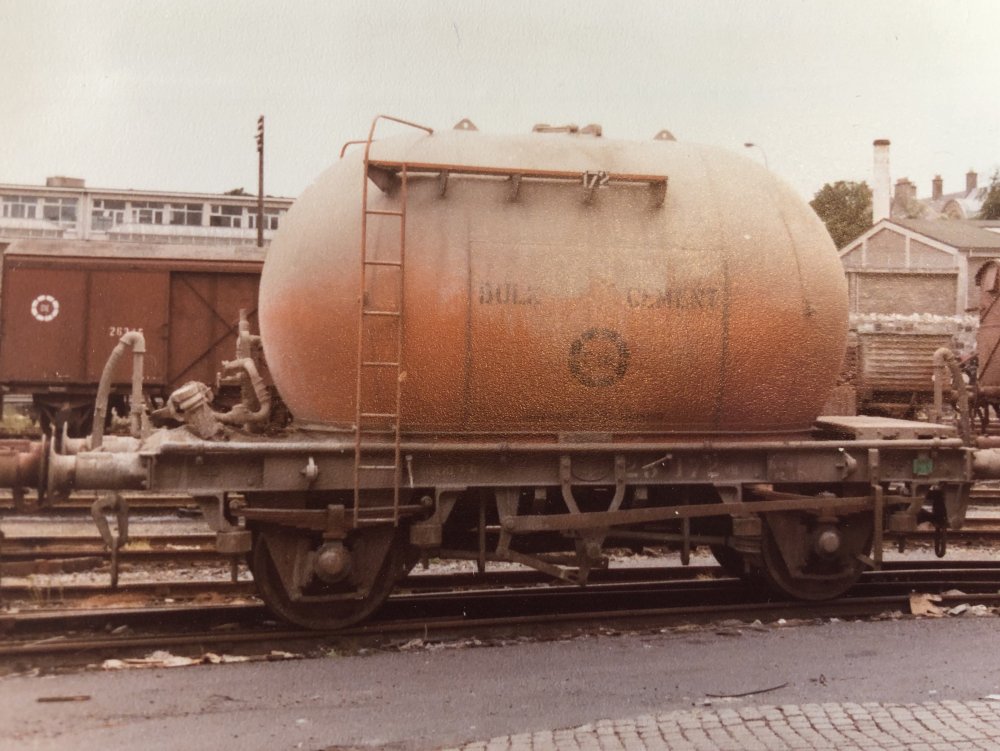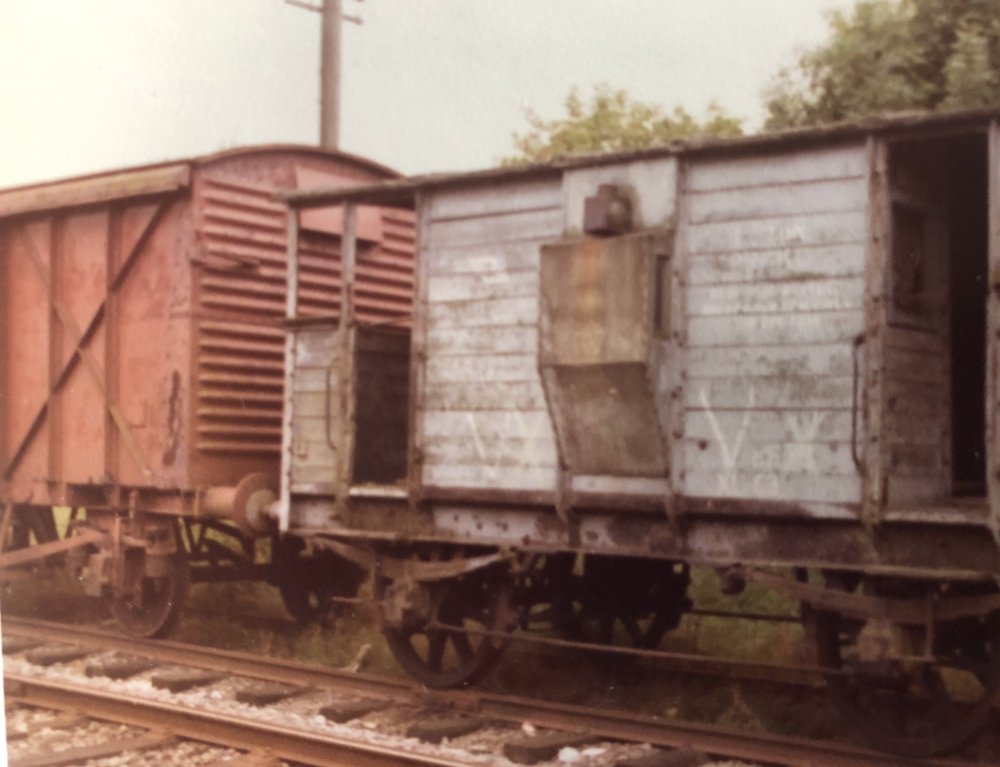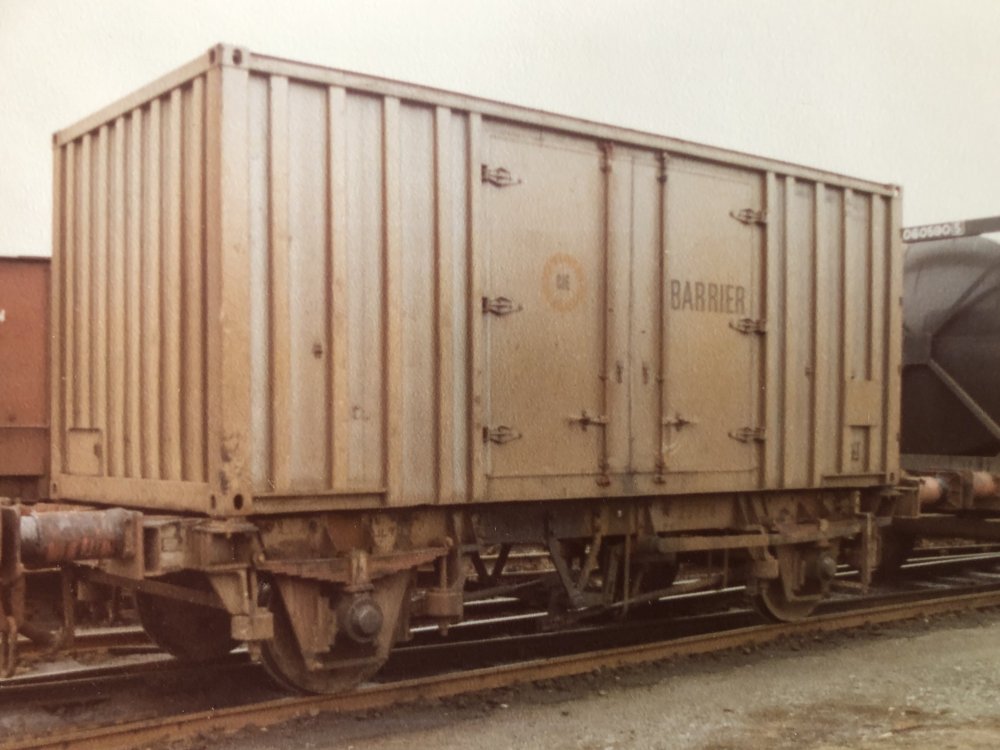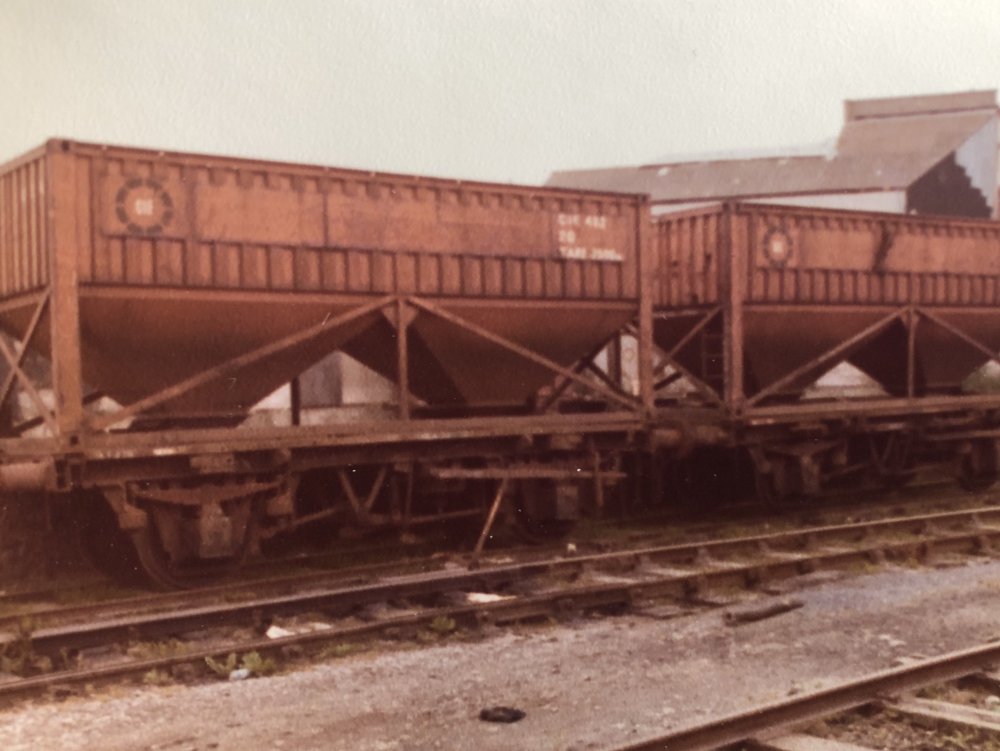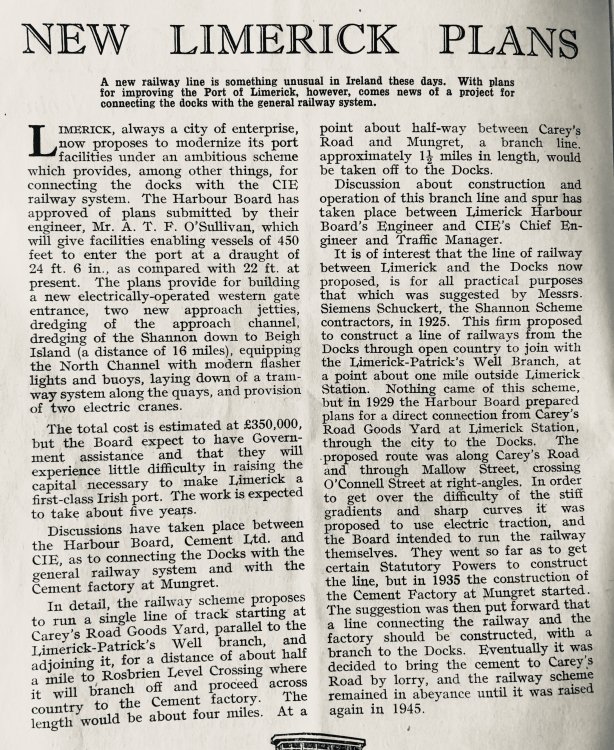-
Posts
15,934 -
Joined
-
Last visited
-
Days Won
394
Content Type
Profiles
Forums
Events
Gallery
Blogs
Community Map
Everything posted by jhb171achill
-
There was some sort of half-hearted local idea some years ago (maybe in the 1990s) when ACE funding was obtained to build a replica of the luggage truck for display at Fintona. The lower deck of an old Belfast tramcar was also found in a field somewhere and brought to Fintona to be rebuilt as a sort of "Fintona Tram". It would actually have been a very nice attraction, if a "Dick" could be found! The tram was vandalised, but has later been restored and is now on display at the former Clogher Valley Railway's Maguiresbridge station not far away. Had anything some of it, the station site is now a Tesco car park, but a bit like the reincarnation of the station at Downpatrick, a replica building of sorts could have been provided at the "throat" end of what had been Fintona station, and the track relaid on the original route of the 1.5km line to the junction. It would seem that the junction platform remains, buried under sixty years growth of bushes and trees, and a run to there and back wouldn't take people anywhere - just a "spin". I was tempted to think that it would have made (and possibly still could make) a nice little low-cost (and very unique) "preserved railway". If anyone knows who owns the land, I'll assist them with the grant application!
-
Yes, nothing more than that - local traditions!
-
MURPHY MODELS ... VIVA LA SPAIN....
jhb171achill replied to burnthebox's topic in For Sale or Wanted
As Wrenneire has said, "if it looks to good to be true, it probably is". In my previous life as a collector of Austrian 009, I got stung a couple of times, in one case buying a locomotive whose motor was banjaxed, and beyond repair...... Less than €50 for an 071 or 201 looks - - - strange. -
Can anyone throw any light on what this is? The picture is taken at Newcastle West, apparently c.1953 and is on page 46 of “Chasing the Flying Snail” by Anthony Burges. Appears to have van doors (?) at the far end?
-
Cuisle na Tíre (“Ireland’s Transport Magazine”)
jhb171achill replied to jhb171achill's topic in General Chat
This was 1947, obviously. The article does not make clear whether the ones seen were in traffic or not, or if so, how many were. I think that at least a few were kicking about probably for loco coal until Broadstone said goodbye to its last steam engine about 1962. -
I love those scenes, Ernie - very "atmospheric"! At this time of year, I have been since teens, and always will be, conditioned to thinking that it is "May Tour Time", as for most of my life I've been preparing for whatever role I would be volunteering for (nowadays very peripheral!). Obviously not this year, but scenes like this always make me think of what I would see about me as I wandered across sidings where the train was parked overnight, after cleaning out the dining car or something....
-
Cuisle na Tíre (“Ireland’s Transport Magazine”)
jhb171achill replied to jhb171achill's topic in General Chat
News in 1947 from the fledgling IRRS, and one of their early “outings”; what one wouldn’t give to repeat it today, almost three quarters of a century later. -
Revisiting the Fintona tram A 1947 Cuisle article, when it still had a decade to go, and another photo of it getting ready to be hitched up to a steam engine to leave a Fintona for the last time, to go to Belfast to the museum. Staff had pushed it to this position from under the canopy. Senior travelled with it as far as Omagh. Its small luggage wagon can be seen bottom right.
-
Must have been a one-off, then, that's fair enough. Your pic above shows it in blue and cream, with black ends, and it's 1956....so back to blue and cream, then UTA green, presumably, rather than back to brown? An interesting one.
-
That's exactly what it is, Lambegman. The GNR had started painting a FEW main line carriages in dark blue and cream, and the ends were indeed black. The 1953 "Royal Train" was a mix of NCC and GNR coaches, but all were painted in the then-newish GNR railcar (and Fintona Tram!) livery. Do we know for certain that it was painted CIE green? The GNR stock working through generally remained in GNR livery - I've seen pics of a full GNR brown train sitting in Cork on this service. While I cannot be certain, I had never heard of a GNR coach being painted in CIE livery until, obviously, after 1958 when the GNR was dissolved. I can't help feeling that it's more likely that once repainted dark blue / cream for the Royal train, it remained in that livery until UTA green made itself known. I have seen a pic somewhere of a two-coach local Lisburn - Antrim loco-hauled local in the very early 60s, in which one coach is dark blue and cream, the other either UTA green or brown (it's a black & white pic).
-
Sorry, Galteemore, missed that. Once I get back in, whenever that is, I'll get those for you.
-
Most Donegal coaches were, over buffers, about 32ft. No. 1, the surviving 6-wheeler, was shorter, and obviously the NCC ones were longer. For 11 coaches you could be looking at very approximately 115 yards platform length.
-
There was nowhere to stop! The line simply consisted of the two stations, Waterford and Tramore, nowhere in between. Three locos were converted like the one shown, and the trio replaced the older Tramore locos, until the diesel railcars arrived in the fifties. Then they went back to the main system.
-
In those days, nobody worried unduly if a train was a bit longer than a platform - I recall getting out of a long train, down onto the ballast, even at Finaghy, outside Belfast, one time! Thus, you might get an 11-coach train in a station designed for nine! I looked in the Patterson CDR history to see what the platform length was, but it is not mentioned as far as I can see. An actual scale model, as you will know, of even a moderate-sized platform would be long on a model.
-
-
I couldn't swear to "never", but I certainly didn't ever either see or hear of a container like that with "BULK" written on it as well as "Bell", in Ireland.
-
You're right about some getting into the Bretland train - I suspect that the one I saw in the late 1960s was one such - it certainly looked as much like the above as I am capable of remembering. War surplus makes perfect sense - I had an idea in the back of my mind about them originating about then - must have read it somewhere before!
-
Yes, and if we look at that parapet, it seems that the left hand side of it is old stone masonry, while the right is newer block masonry. Clearly they are rebuilding a bridge. Could be anywhere. It is possible, that once I match up his notes with all (rather than just some!) of his pictures, I may be able to find out. I wonder can anyone, meantime, help with 3406M? Similar to the wagon to the right, very "American-looking" bogie rail flats. I recall seeing one derelict many many years ago somewhere round the North Wall area. Senior pointed it out to me.
-
Almost ten years before Todd Andrews and the massive railway closures of 1959-63, this article was written. It’s in a 1947 Cuisle issue. Then as now it appears that the government was suffering from what I call “Clonmel Syndrome”; using any means possible to get people out of trains and onto buses! (Look at the rail service Clonmel - one train a month, weather and horoscopes permitting, from that day to this......! Will the coronavirus finally finish the Limerick Junction - Waterford Line? Well, a vintage green CIE bus might provide a little compensation!
-
- 1
-

-
A few 1970s wagons and a puzzle. 1. 1978 - Heuston 2. The bubbles need no introduction here! This one has been factory-weathered by IRM.... 3. I think I’ve shown this before, but anyway..... GSWR guards van, Tralee, 1978 4. Barrier wagon - a silver painted container. Lurking in a siding at Heuston goods (I think), c.1968. Were these on the Asahis? 5. Grain wagons, Tralee, Rock St - again, I may have posted before. 6. The puzzle. One of Seniors. Other than the fact that it’s obviously a MGWR wagon with those distinctive bogies, all I know about this picture is that it dates from the late 1930s / early 1940s. I’ve no idea where it is, nor what the new concrete beams are. I do know that senior’s first ever job in his career was having some concrete beams installed at Mullingar station, but they were smaller than these.
-
The thing is, I believe, that each layout is it's owner's kingdom. Some prioritise scenery, some operational accuracy, some the engineering accuracy or complexity of a model, some crave absolute visual accuracy. None are wrong and none are right - it's a matter of personal opinion. Lately, the late Drew Donaldson's huge layout has been mentioned. The one time I saw it operate, I don't recall any scenery at all, yet the models were built to a very high standard indeed, for the time. Yet, almost all were in the wrong livery - a bit like much of the real-life preserved stuff! Personally, as will be very clear from anyone who reads my demented ramblings here, the visual aspect is what I personally enjoy - that can mean highly realistic scenery, and well-proportioned models which would naturally be in an accurate livery - but that's just me. Arising out of that, on a website such as this, if you've an engineering issue, the likes of Mayner and ecmtrains and others here will be along to share their expertise and knowledge. various among us who have a good historical knowledge can share that too. If I have access to information about liveries (and I have a huge lot of such stuff, because I've been making notes of it for forty years) I am pleased to share it! But, as I say, that's only my take on the whole hobby which as others have noted, is a very varied one. There are a million ways to skin a cat, and the creation of an overall atmosphere, I think, is yet another great skill that the hobby includes; your outdoor layout has that in lorry loads!
-
Looks superb, DSERetc. Really captures the steam era!
-
This took me greatly by surprise. Mention of the Castlemungret branch - in 1947! It wasn't opened until over ten years later! I had no idea it was even being thought if then.....
-
The thing about the Midland in the GSR era, like much at that time, in order to add colour, you're looking at carriages. Every single solitary item of goods stock, and every single solitary locomotive were all dull grey, often liberally "weathered"! The GSR did tend to keep locomotives clean, which made the grey look OK, a bit like the 071s right now - a dirty one just looks awful, but a clean one, well, OK or even good, on a clean sunny day! So, if you go back to the 1930s, you have three potential carriage liveries as oases in a sea of fifty-five shades of grey (yes, funny people out wesht). - 6-wheelers, Branch line and secondary stock - some still in the old very dark shade that the GSR inherited from the GSWR and splashed over everything from the Wisht Clare to main line Cork. In model form, you need some mix of a very dark maroon and a very dark chocolate brown, the reddish tint distinct but not much more. Weathered, they looked almost black at times. - 6-wheelers, Branch line and secondary stock - if repainted in recent times (since 1933) the same bright maroon as used by the LMS in England, and by extension the NCC. Right down to the same lining, though different crest and markings. Some secondary stock had no lining (same on NCC!). - Main line bogie stock - a very few still in the old dark "crimson lake" colour described above, a few in (English) GWR-style chocolate and cream - a short-lived main line livery current from about 1927/8 to 1934 or so - but most in the LMS livery. The horse box will either be a totally weathered brake dust colour, the sides looking like this extremely dark brownish red, but really very heavily weathered indeed, or possibly quite tidy LMS maroon. As far as I have ever become aware, no horse boxes were brown and cream - though it isn't beyond possibility that one or two might have got a coat of brown paint. I hope that is useful. By the way, once you go into CIE days, it's not until 1947 that any locos on the Midland become anything other than grey - and this means a few, but seemingly not all, of the "Woolwiches" and a couple of 4.4.0s. The rest.....grey, of course!
-
"Rails Through Connemara" is now ready, and but for the coronavirus shutdown would have been on the shelves in June - dear knows when it'll be now, but it shows more pics like that. If you are going for the late 1940s, there are two options for this van. 1. Reasonably clean looking and fairly recently painted in the new CIE livery of DARK green - not the late 1950s shade. If you look at the Bachmann train set with the "Woolwich" and set of coaches, or the background to my "avatar" thingy to the left, which is actual CIE paint, that is the shade for sides and ends. Roof very dark grey, almost black - or, indeed, dull matt black. Chassis matt black. Markings will have no "eau-de-nil" lines, but just the plain green, with the "flying snail" logo and a number. Being a Midland vehicle, this will end with "M", thus: 2M, 15M, 21M, or whatever. 2. For a horsebox, probably more likely not to be up-to -date, so still in old GSR livery. It probably won't see a paintbrush for a while yet - thus while technically GSR maroon (exact shade being British "LMS maroon"), it will probably not have been done up for ten years, so the chassis and roof will be an indistinguishable dusty weathered dirt colour, while the sides and ends will be a faded, dulled-down browny-reddish colour, the marking "G" "S" in small writing barely visible, with the number. The "GS" and number were in shaded gold letters, now faded to a dirty dull yellowy colour.
.png.c363cdf5c3fb7955cd92a55eb6dbbae0.png)

